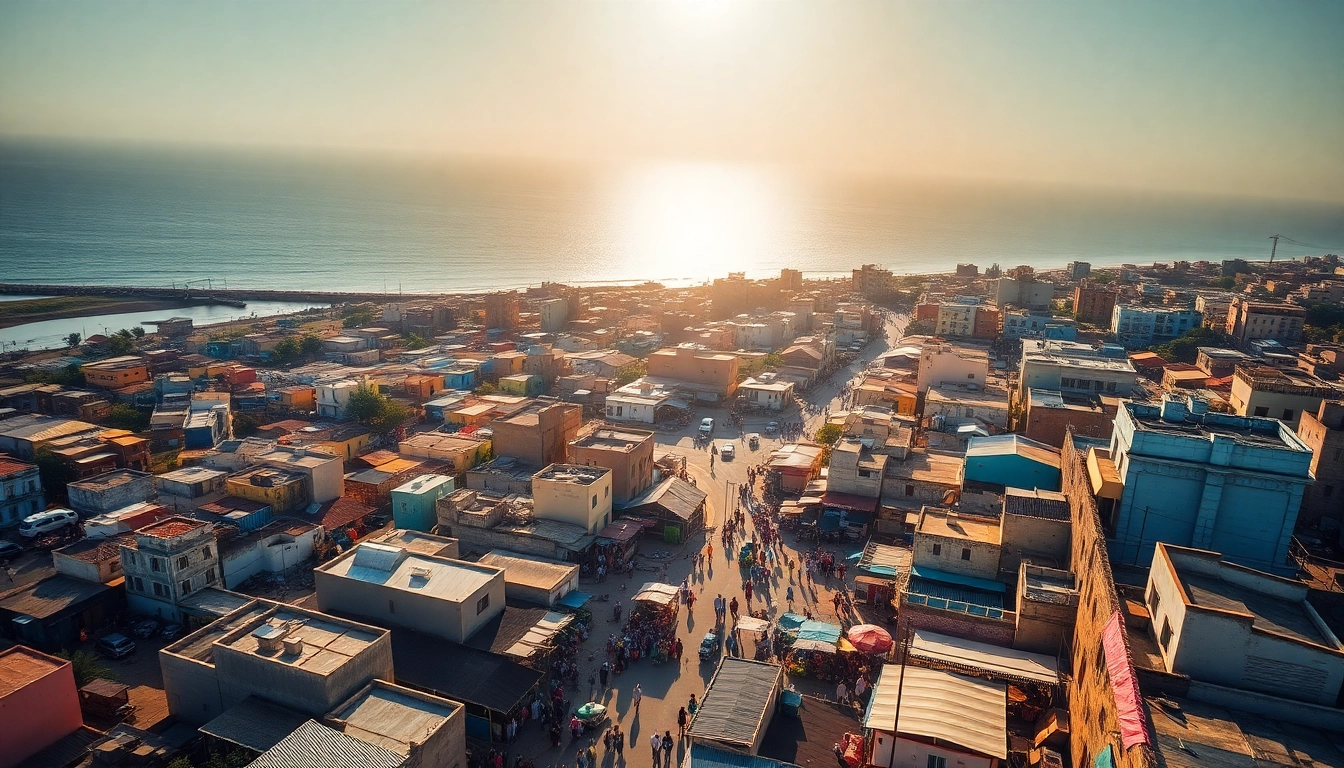Introduction to Mogadishu km square
Mogadishu, the capital city of Somalia, has become a focal point of attention for its rapidly evolving landscape and cultural richness. Covering an area of approximately 560 square kilometers, or 220 square miles, mogadishu km square serves as an intriguing study in urban growth, historical significance, and socio-cultural dynamics within the region. This article will delve deep into the geographical overview, historical background, modern urban development, and the vibrant culture that defines this bustling city.
Geographical Overview
Mogadishu is strategically positioned alongside the Indian Ocean in the Horn of Africa, which has historically made it a vital trade hub. The city’s geographic coordinates place it at a latitude of 2.04° N and longitude of 45.34° E. Its geographical landscape includes beautiful beaches, extensive marine biodiversity, and a mixture of urban and rural settings. The altitude of Mogadishu is relatively low, averaging close to sea level, which contributes to its tropical climate characterized by warm temperatures and seasonal rainfall.
Historical Significance
The history of Mogadishu is as rich as its cultural heritage. Founded over a thousand years ago, it was one of the most significant cities in the Swahili Coast trading network. It served as a nexus for trading goods such as ivory, textiles, and spices, contributing to its wealth and the establishment of various sultanates over the centuries, including the Sultanate of Mogadishu. Renowned for its unique mix of Arabian, African, and European influences, Mogadishu’s historical significance remains a vital part of its identity today.
Modern Urban Development
In recent years, Mogadishu has undergone substantial urbanization and development. Following years of civil unrest, the city has shown resilience and is experiencing a revival. Infrastructure improvements have led to the construction of new roads, buildings, and public spaces, aiming to foster economic growth and enhance living standards. This urban transformation includes a blend of traditional and contemporary architectural styles, which brings a unique aesthetic appeal to the cityscape.
Understanding the Area of Mogadishu km square
Total Area and Population Density
Mogadishu’s area of approximately 560 square kilometers means that it is one of the larger urban centers in the region. The population density is notably high, with estimates suggesting around 2.7 million residents. This results in a vibrant yet densely packed city profile where cultural diversity is at the forefront. The population is a mix of various ethnicities and backgrounds, contributing to the dynamic cultural fabric of Mogadishu.
Comparing Mogadishu’s Size with Other Cities
In comparison to other major cities in Africa, Mogadishu holds a unique position. While cities like Cairo or Lagos may boast larger populations, Mogadishu’s area and geographic features make it distinct. For instance, Cairo spans 606 square kilometers with a population of over 9 million, while Mogadishu, despite its smaller area, manages a higher population density. Understanding these comparisons helps to appreciate the distinct challenges and advantages Mogadishu faces as it continues to grow.
Significance of Land Distribution
Land distribution in Mogadishu presents both opportunities and challenges. Urban planning is becoming increasingly important as the city expands. With limited land available for development, balancing residential, commercial, and public spaces is crucial. The ongoing conflict and historical displacement have also complicated land ownership issues, making effective urban planning essential for sustainable future growth.
Exploring Mogadishu’s Local Culture
Cultural Festivals and Events
Culture in Mogadishu is vibrant and multifaceted, with festivals and events that showcase Somali traditions. Festivals such as the Somali Independence Day on July 1st are celebrated with parades, music, and traditional dances, bringing the community together. These cultural expressions are not only vital for communal identity but also serve as a platform for promoting peace and unity in the city.
Traditional Cuisine Unique to the Area
The culinary landscape in Mogadishu is rich and diverse, influenced by various cultures, including Arab, African, and Indian. Traditional dishes like “bariis iskukaris” (seasoned rice) and “suqaar” (diced meat cooked with spices) are staples. Street food vendors contribute to the vibrant food scene, offering dishes that attract both locals and visitors, making the city a gastronomic delight.
Influence of Music and Arts
Music and arts are deeply embedded in Mogadishu’s cultural identity. The city boasts an array of talented musicians and artists who draw on Somalia’s rich oral traditions. Genres such as “banaadiri” reflect the city’s history and cultural narrative. Events showcasing local talents, such as music festivals and art exhibitions, further promote the artistic spirit and enable a platform for cultural expression.
Challenges Facing Mogadishu km square
Urbanization and Infrastructure Strain
As Mogadishu continues to grow, urbanization presents significant challenges. The rapid influx of people from rural areas strains infrastructure, leading to issues such as traffic congestion and inadequate public services. The local government is tasked with addressing these challenges while ensuring sustainable urban development. Comprehensive urban plans aimed at improving infrastructure and public services are vital for enhancing the quality of life in Mogadishu.
Environmental Concerns and Solutions
Environmental issues are becoming increasingly prominent due to urban expansion and neglect. Waste management, water supply, and pollution are critical concerns that require immediate attention. Initiatives aimed at promoting environmental sustainability, such as community clean-up projects and awareness campaigns, are being developed to address these challenges. Implementing effective waste management systems and promoting green spaces are essential steps toward a healthier urban environment.
Socio-economic Issues
Mogadishu faces various socio-economic challenges, including poverty, unemployment, and limited access to education and healthcare. Efforts to combat these issues involve international aid, local government initiatives, and community-based programs aimed at stimulating economic growth. Building local businesses and creating job opportunities are central to improving the socio-economic landscape of Mogadishu.
Future Prospects for Mogadishu km square
Urban Development Plans
Looking forward, Mogadishu is poised for numerous urban development projects that seek to transform the city’s infrastructure and economy. Plans include modernizing transport systems, enhancing housing developments, and improving public amenities. Strategic partnerships with international organizations and local stakeholders are crucial for realizing these aspirations.
Investment Opportunities in the Region
As stability gradually returns, Mogadishu is becoming a focal point for investment opportunities. Entrepreneurs and investors are beginning to recognize the potential for growth in sectors like hospitality, technology, and agriculture. The government encourages foreign investment to aid in the city’s development and create job opportunities for its residents.
Vision for Sustainable Growth
The vision for Mogadishu’s future is centered around sustainable growth that respects its cultural heritage while adapting to modern challenges. A comprehensive approach to urban planning, community engagement, and environmental sustainability will be essential in shaping a prosperous future for the city. Various stakeholders, including the local government, community organizations, and international partners, must collaborate to achieve a shared vision of Mogadishu as a thriving urban center.




